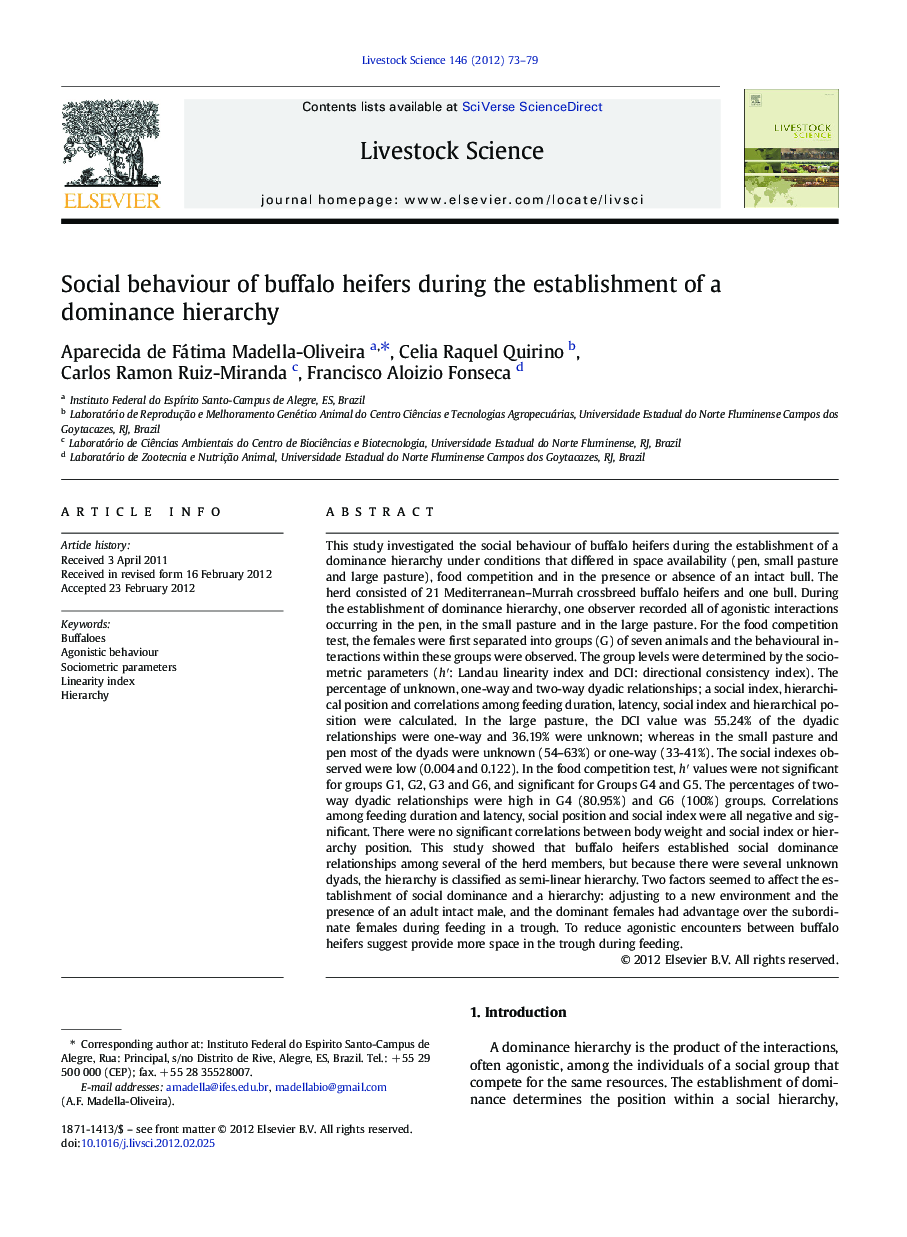| کد مقاله | کد نشریه | سال انتشار | مقاله انگلیسی | نسخه تمام متن |
|---|---|---|---|---|
| 5790863 | 1109512 | 2012 | 7 صفحه PDF | دانلود رایگان |

This study investigated the social behaviour of buffalo heifers during the establishment of a dominance hierarchy under conditions that differed in space availability (pen, small pasture and large pasture), food competition and in the presence or absence of an intact bull. The herd consisted of 21 Mediterranean-Murrah crossbreed buffalo heifers and one bull. During the establishment of dominance hierarchy, one observer recorded all of agonistic interactions occurring in the pen, in the small pasture and in the large pasture. For the food competition test, the females were first separated into groups (G) of seven animals and the behavioural interactions within these groups were observed. The group levels were determined by the sociometric parameters (hâ²: Landau linearity index and DCI: directional consistency index). The percentage of unknown, one-way and two-way dyadic relationships; a social index, hierarchical position and correlations among feeding duration, latency, social index and hierarchical position were calculated. In the large pasture, the DCI value was 55.24% of the dyadic relationships were one-way and 36.19% were unknown; whereas in the small pasture and pen most of the dyads were unknown (54-63%) or one-way (33-41%). The social indexes observed were low (0.004 and 0.122). In the food competition test, hâ² values were not significant for groups G1, G2, G3 and G6, and significant for Groups G4 and G5. The percentages of two-way dyadic relationships were high in G4 (80.95%) and G6 (100%) groups. Correlations among feeding duration and latency, social position and social index were all negative and significant. There were no significant correlations between body weight and social index or hierarchy position. This study showed that buffalo heifers established social dominance relationships among several of the herd members, but because there were several unknown dyads, the hierarchy is classified as semi-linear hierarchy. Two factors seemed to affect the establishment of social dominance and a hierarchy: adjusting to a new environment and the presence of an adult intact male, and the dominant females had advantage over the subordinate females during feeding in a trough. To reduce agonistic encounters between buffalo heifers suggest provide more space in the trough during feeding.
Journal: Livestock Science - Volume 146, Issue 1, June 2012, Pages 73-79